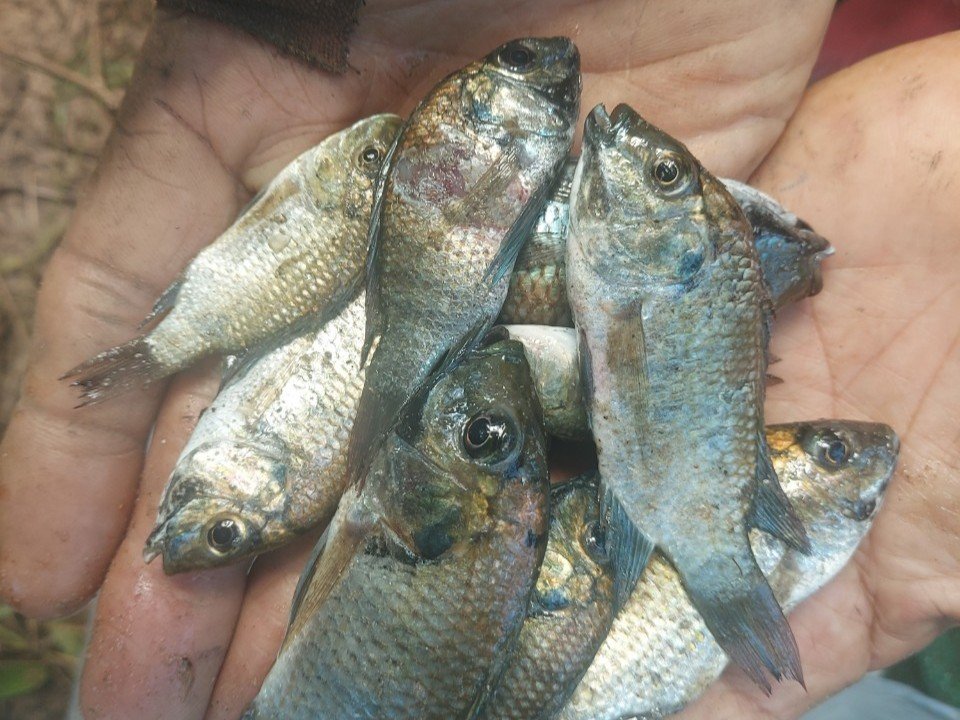Thursday, 13 November 2025
Thailand reports progress in battle against Blackchin tilapia
The DOF announced a breakthrough in controlling the invasive Blackchin tilapia with the introduction of a specially engineered strain known as Blackchin Tilapia 4n—a genetically modified variant designed to inhibit…

The DOF announced a breakthrough in controlling the invasive Blackchin tilapia with the introduction of a specially engineered strain known as Blackchin Tilapia 4n—a genetically modified variant designed to inhibit reproduction
Thailand is making significant progress in its battle against Blackchin tilapia, with collaborative initiatives to turn a problem into an opportunity. A multi-stakeholder effort led by the Department of Fisheries (DOF), supported by major corporations such as Charoen Pokphand Foods Public Company Limited (CP Foods), transforms this environmental challenge into a pathway for sustainable development and local economic growth.
In February 2025, the DOF announced a breakthrough in controlling the invasive Blackchin tilapia with the introduction of a specially engineered strain known as Blackchin Tilapia 4n—a genetically modified variant designed to inhibit reproduction. DOF has commenced testing the release of male Blackchin Tilapia 4n at experimental sites this month to evaluate its effectiveness in reducing the invasive fish population.
Additionally, the government is launching Phase II of the Rubber Authority of Thailand’s initiative with a THB 12 million budget for the purchase of Blackchin tilapia to convert into bio-fermented fish for rubber plantations. The initiative will start in February 2025, allowing fishermen to sell captured black chin tilapia for THB 20 per kilogram. This marks significant progress in the integrated collaboration between the government, private sector, communities, and farmers aimed at systematically and sustainably controlling the spread of Blackchin tilapia.
The programs form part of a five-point government strategy to address the ecological challenges posed by invasive species. Measures include eradicating fish from all Thai waters, biological control such as releasing predatory fish innovative approaches like inducing sterility in invasive fish, and extensively monitoring black chin tilapia movements in buffer zones and border areas. Public education efforts are also being ramped up to raise awareness about the risks of cultivating or releasing invasive fish.
As a result of these ongoing efforts, the Blackchin tilapia population survey in December 2024 has visibly declined, and the number of affected provinces has decreased from 19 to 17. This demonstrates that the continuous implementation of these measures is yielding concrete results in reducing the spread of this invasive species.
Technology
Tetra Pak opens Product Development Centre in France
Nov 13, 2025 | Company News
MENU ORDER AI to launch app aimed at GLP-1 users and health-conscious diners
Nov 10, 2025 | Company News
Harnessing Quantum AI for Greener Minds and Healthier Futures
Nov 10, 2025 | Interaction
Food Testing
Intertek acquires Costa Rican testing business Suplilab
Nov 07, 2025 | Company News
Thermo Fisher Scientific launches Orbitrap mass detector for food safety testing
Oct 24, 2025 | Company News
ADM advances quality capabilities with opening of new Central Milling Laboratory
Oct 16, 2025 | Company News
More Popular
Syren Spreads launches spoonable adaptogenic beauty chocolate
Nov 13, 2025 | Company News
Gunpowder Irish Gin expands with new Italian Fig & Laurel Expression
Nov 13, 2025 | Beverages
8 winter foods that transform your skin by healing your gut first
Nov 13, 2025 | Beverages






